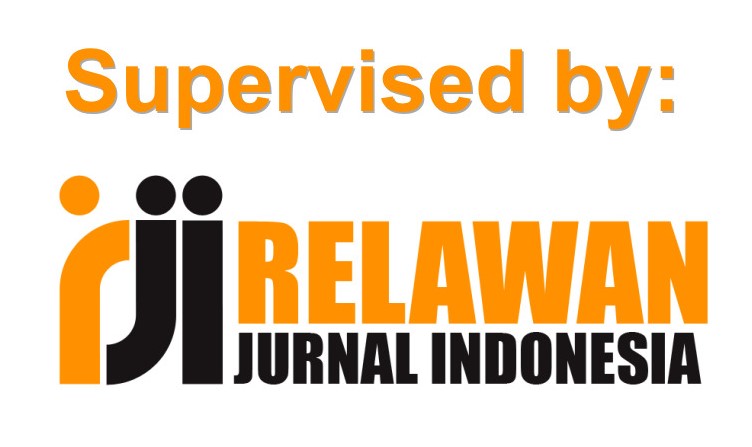Higher-Order Thinking Skills in Music Education: A Comprehensive Analysis
DOI:
https://doi.org/10.24114/grenek.v13i2.62780Keywords:
Higher Order Thinking Skills, Music Teaching and Learning, Literature ReviewAbstract
Researchers have continued to urge the importance of strengthening students' higher-order thinking skills (HOTS) as a key factor for education. Researchers in the field of music education are actively advocating for the enhancement of HOTS among students. To advance research in this area, a thorough and comprehensive literature review is necessary. This review synthesized existing findings to elucidate how HOTS can enhance musical education and performance and offer insights into effective pedagogical strategies. By systematically examining the integration of HOTS in musical contexts, pointing out gaps in research, the study contributed to advancing educational practices and theoretical understanding in this domain. Furthermore, offers insights that can inform the development of future research on HOTS in music teaching and learning.References
Alpert, P. T., Miller, S. K., Wallmann, H., Havey, R., Cross, C., Chevalia, T., & Kodandapari, K. (2009). The effect of modified jazz dance on balance, cognition, and mood in older adults. Journal of the American Association of Nurse Practitioners, 21(2), https://doi.org/108-115. 10.1111/j.1745-7599.2008.00392.x
Anderson, L. W., & Krathwohl, D. R. (2001). A taxonomy for learning, teaching, and assessing: A revision of Bloom’s taxonomy of educational objectives. NY: Addison Wesley Longman.
Basal, A. (2015). The implementation of a flipped classroom in foreign language teaching. Turkish Online Journal of Distance Education, 16(4). https://doi.org/10.17718/tojde.72185
Blackwell, J. (2021). Differentiating between teaching experience and expertise in the music studio: A pilot study. Research Studies in Music Education, 43(1), 74–87. https://doi.org/10.1177/1321103X19899172
Blocher, L., Greenwood, R., & Shellahamer, B. (1997). Teaching Behaviors of Middle School and High School Band Directors in the Rehearsal Setting. Journal of Research in Music Education, 45(3), 456–469. https://doi.org/10.2307/3345539
Bloom. (2002). An Analysis Of Traditional Pedagogical Practices With Innovative Strategies For Beginning Band Students With A Focus On Assessment, Higher-Order Thinking Skills And Differentiation. (Master dissertation, The University of Texas at Arlington).
Bolden, B., Rickey, N., & DeLuca, C. (2023). Nurturing Musical Creativity through Assessment for Learning. Music Educators Journal, 109, 18-26. https://doi.org/10.1177/00274321231176683
Carey, G., & Grant, C. (2015). Teacher and student perspectives on one-to-one pedagogy: Practices and possibilities. British Journal of Music Education, 32(1), 5–22. https://doi.org/10.1017/S0265051714000084
Carpenter, N. C., & Schrade, L. (1988). Tragedy in the Art of Music. Comparative Literature, 19(4), 362. https://doi.org/10.2307/1769495
Cook, C. E., & Décary, S. (2020). Higher order thinking about differential diagnosis. Brazilian Journal of Physical Therapy, 24(1), 1–7. https://doi.org/10.1016/j.bjpt.2019.01.010
Cooper, C., Booth, A., Varley-Campbell, J., Britten, N., & Garside, R. (2018). Defining the process to literature searching in systematic reviews: A literature review of guidance and supporting studies. BMC Medical Research Methodology, 18(1), 85. https://doi.org/10.1186/s12874-018-0545-3
Costes-Onishi, P., & Kwek, D. (2022). Inquiry-based learning in music: Indicators and relationships between key pedagogical practices and the quality of critical thinking. Research Studies in Music Education, 45(2), 362-378. https://doi.org/10.1177/1321103X211057457
Cuskelly, J. (2008). Music education, rigour and higher order thinking: Unique contributions from the Kodaly approach. KEYNOTE PAPERS.
Delzell, J. K. (1989). The effects of musical discrimination training in beginning instrumental music classes. Journal of Research in Music Education, 37(1), https://doi.org/21-31. 10.2307/3344950
Fuller, F. F., & Manning, B. A. (1973). Self-confrontation reviewed: A conceptualization for video playback in teacher education. Review of educational research, 43(4), 469-528. https://doi.org/10.3102/00346543043004469
Gaunt, H., & Westerlund, H. (2021). Invitation. In Expanding Professionalism in Music and Higher Music Education (pp. xiii-xxxiii). Routledge.
Glaser, R. (1985). Thoughts on Expertise. https://eric.ed.gov/?id=ED264301
Glaser, R., Chudowsky, N., & Pellegrino, J. W. (Eds.). (2001). Knowing what students know: The science and design of educational assessment. National Academies Press.
Glazer, C., Abbott, L., & Harris, J. (2004). A teacher‐developed process for collaborative professional reflection. Reflective Practice, 5(1), 33–46. https://doi.org/10.1080/1462394032000169947
Goolsby, T. W. (1997). Verbal Instruction in Instrumental Rehearsals: A Comparison of Three Career Levels and Preservice Teachers. Journal of Research in Music Education, 45(1), 21–40. https://doi.org/10.2307/3345463
Gordon, E. (1999). Learning Sequences in Music: A Contemporary Music Learning Theory. GIA Publications.
Grossen, B. (1991). The Fundamental Skills of Higher Order Thinking. Journal of Learning Disabilities, 24(6), 343–353. https://doi.org/10.1177/002221949102400603
Hanna, W. (2007). The New Bloom’s Taxonomy: Implications for Music Education. Arts Education Policy Review, 108(4), 7–16. https://doi.org/10.3200/AEPR.108.4.7-16
Healey, M. (2005). Linking Research and Teaching to Benefit Student Learning. Journal of Geography in Higher Education, 29(2), 183–201. https://doi.org/10.1080/03098260500130387
Helterbran, V. R. (2005). Lifelong or School-long Learning: A Daily Choice. The Clearing House: A Journal of Educational Strategies, Issues and Ideas, 78(6), 261–264. https://doi.org/10.3200/TCHS.78.6.261-264
Heong, Y. M., Othman, W. B., Yunos, J. B. M., Kiong, T. T., Hassan, R. B., & Mohamad, M. M. B. (2011). The Level of Marzano Higher Order Thinking Skillsamong Technical Education Students. International Journal of Social Science and Humanity, 121–125. https://doi.org/10.7763/IJSSH.2011.V1.20
Kruger, J., & Van Merwe, L. (2012). Learning about the world: Developing higher order thinking in music education. The Journal for Transdisciplinary Research in Southern Africa, 8(1). https://doi.org/10.4102/td.v8i1.6
Lau, J. Y. F. (2015). Metacognitive Education: Going beyond Critical Thinking. In M. Davies & R. Barnett (Eds.), The Palgrave Handbook of Critical Thinking in Higher Education (pp. 373–389). Palgrave Macmillan US. https://doi.org/10.1057/9781137378057_23
Lee, J., & Choi, H. (2017). What affects learner’s higher-order thinking in technology-enhanced learning environments? The effects of learner factors. Computers & Education, 115, 143–152. https://doi.org/10.1016/j.compedu.2017.06.015
Leech-Wilkinson, D. (2020). Challenging Performance: Classical Music Performance Norms and How to Escape Them. https://challengingperformance.com/the-book/
Letondal, C., & Mackay, W. E. (2007). The Paperoles Project: An analysis of paper use by music composers. In CoPADD, the 2nd International Workshop on Collaborating Over Paper and Digital Documents.
Lewis, A., & Smith, D. (1993). Defining higher order thinking. Theory Into Practice, 32(3), 131–137. https://doi.org/10.1080/00405849309543588
Liu, J., Ma, Y., Sun, X., Zhu, Z., & Xu, Y. (2022). A Systematic Review of Higher-Order Thinking by Visualizing its Structure Through HistCite and CiteSpace Software. The Asia-Pacific Education Researcher, 31(6), 635–645. https://doi.org/10.1007/s40299-021-00614-5
Mainali, B. P. (2013). Higher Order Thinking in Education. Academic Voices: A Multidisciplinary Journal, 2, 5–10. https://doi.org/10.3126/av.v2i1.8277
Malik, R. S. (2018). Educational challenges in 21st century and sustainable d evelopment. Journal of Sustainable Development Education and Research, 2(1), Article 1. https://doi.org/10.17509/jsder.v2i1.12266
Mao, C. (2023). A Study on Strategies for Cultivating Higher-Order Thinking Skills in Primary and Secondary School Students. Frontiers in Educational Research. https://doi.org/10.25236/fer.2023.062011
Meissner, H., & Timmers, R. (2020). Young Musicians’ Learning of Expressive Performance: The Importance of Dialogic Teaching and Modeling. Frontiers in Education, 5, 11. https://doi.org/10.3389/feduc.2020.00011
Miri, B., David, B.-C., & Uri, Z. (2007). Purposely Teaching for the Promotion of higher order thinking Skills: A Case of Critical Thinking. Research in Science Education, 37(4), 353–369. https://doi.org/10.1007/s11165-006-9029-2
Musselwhite, D. J. (2018). Psychometric perspectives on the assessment of pre-service teachers in instrumental music education. (Doctoral dissertation, University of Georgia).
Nainggolan, I. A. (2022). Bibliometric analysis of higher order thinking in 2012-2021. Journal of Educational Technology and Instruction, 1(1), 14-24. https://doi.org/10.70290/jeti.v1i1.2
Ng, R. Y.-K., Wells, R., Lee, L., & Ng, K.-K. (2022). Beyond Perfection: Technology as an Enabler to Promote Higher Order Skills in Performing Arts Education. In R. C. Li, S. K. S. Cheung, P. H. F. Ng, L.-P. Wong, & F. L. Wang (Eds.), Blended Learning: Engaging Students in the New Normal Era (Vol. 13357, pp. 325–335). Springer International Publishing. https://doi.org/10.1007/978-3-031-08939-8_28
Onosko, J. J., & Newmann, F. M. (1994). Creating more thoughtful learning environment. Creating Powerful Thinking In Teachers And Students Diverse Perspectives. Forth Worth: Harcourt Brace College Publishers.
Resnick, L. B. (1987). Education and learning to think. Rarebooksclub Com
Rowe, V. C. (2009). Using video-stimulated recall as a basis for interviews: Some experiences from the field. Music education research, 11(4), 425-437. https://doi.org/10.1080/14613800903390766
Russell, -Bowie Deirdre. (2007). Learning to Teach Music through an Academic Service Learning Project. Australian Journal of Music Education, 1, 50–60. https://doi.org/10.3316/informit.098431708180101
Scully, D. (2019). Constructing Multiple-Choice Items to Measure higher order thinking. Practical Assessment, Research, and Evaluation, 22(1). https://doi.org/10.7275/swgt-rj52
Sheldon, D. A., & DeNardo, G. (2005). Comparisons of higher order thinking Skills among Prospective Freshmen and Upper-Level Preservice Music Education Majors. Journal of Research in Music Education, 53(1), 40–50. https://doi.org/10.1177/002242940505300104
Sheldon, D. A., Williamson, H., Carrillo, J., Brittin, R. V., Choi, G., Bruno, Z., Buonviri, N., & Batten, E. (2010). Evidence of the development of higher order thinking skills in instrumental music instruction. In Proceedings of the 22nd International Seminar on Research in Music Education, 13-18. https://www.isme.org/sites/default/files/documents/2008+Research+Proceedings.pdf#page=71
Shuler, S. C. (2011). Music Education for Life: The Three Artistic Processes—Paths to Lifelong 21st-Century Skills through Music. Music Educators Journal, 97(4), 9–13. https://doi.org/10.1177/0027432111409828
Siow, L. C. (2015). A case study of the role of higher order thinking skills on the development of sight reading ability for piano beginners at age seven to ten. (Doctoral dissertation, University of Malaya).
Swanwick, K. (1991). Further Research on the Musical Development Sequence. Psychology of Music, 19(1), 22–32. https://doi.org/10.1177/0305735691191002
Trapkus, P. (2020). Teaching Musical Interpretation: A Student-Centered Model for Addressing a Fundamental Concept. American String Teacher, 70(1), 17–21. https://doi.org/10.1177/0003131319891147
Wei, Q., Zhang, X., Deng, W., Lu, J., Huang, X., Yan, M., Chen, G., Liu, Z., & Jia, S. (2021). Higher-order topological semimetal in acoustic crystals. Nature Materials, 20(6), Article 6. https://doi.org/10.1038/s41563-021-00933-4
Wing, C. K., Piaw, C. Y., & Chang, P. K. (2014). Effects of Aural-imitative and Aural-motivic Analyses on higher order thinking Skill and Creative Musical Product in Music Improvisation. Procedia - Social and Behavioral Sciences, 116, 5130–5134. https://doi.org/10.1016/j.sbspro.2014.01.1086
Woody, R. H. (2006). Musicians’ Cognitive Processing of Imagery-Based Instructions for Expressive Performance. Journal of Research in Music Education, 54(2), 125–137. https://doi.org/10.1177/002242940605400204
Downloads
Published
Issue
Section
License
Copyright (c) 2024 Jiarui Pu, Abdul Rahman Bin Safian, Mohd Nizam Bin Nasrifan

This work is licensed under a Creative Commons Attribution-ShareAlike 4.0 International License.
Authors published with the Grenek: Jurnal Seni Musik agree to the following terms:
- Authors retain copyright and grant the journal the right of first publication with the work simultaneously licensed under a Creative Commons Attribution License (CC BY-SA 4.0) that allows others to share the work with an acknowledgment of the work's authorship and initial publication in this journal.
- Authors are able to enter into separate, additional contractual arrangements for the non-exclusive distribution of the journal's published version of the work (e.g., post it to an institutional repository or publish it in a book), with an acknowledgment of its initial publication in this journal.
- Authors are permitted and encouraged to post their work online (e.g., in institutional repositories or on their website) prior to and during the submission process, as it can lead to productive exchanges, as well as earlier and greater citation of published work. (See The Effect of Open Access)








